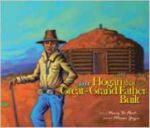
Part Hawaiian, part Mainlander. Perpetual new girl at school. Hanging in the shadow of her actress mother’s spotlight. And now: new resident of the prominent West family’s guest cottage. Bracing herself for the embarrassment of being her classmates’ latest charity case, Lea is surprised when she starts becoming friends with Will and Whitney West instead—or in the case of gorgeous, unattainable Will, possibly even more than friends. And despite their differences, Whitney and Lea have a lot in common: both are navigating a tangled web of relationships, past disappointments and future hopes. As things heat up with Will, and her friendship with Whitney deepens, Lea has to decide how much she’s willing to change in order to fit into their world.









